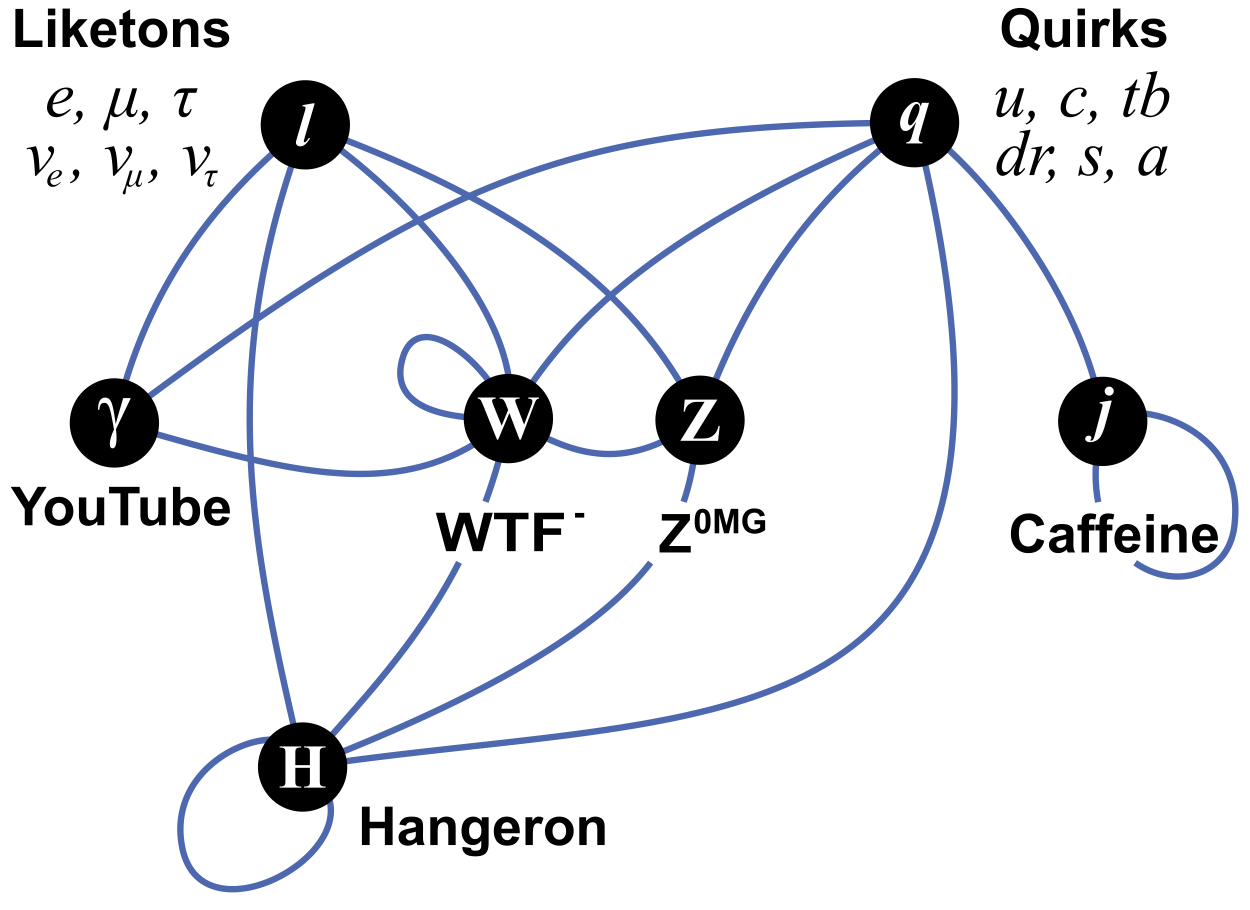Sociophysics
« previous post | next post »
Kieran Healy, who will spending a year at the Center for Advanced Study in the Behavioral Sciences, is looking forward to research at the "Stanford Superconducting Supersocializer, which will … propel local college sophomores at tremendous speeds into unfamiliar groups of people in an effort to plumb the structure of the elementary particles of social interaction", in order to test "the emerging Standard Model of sociophysics":
Kieran explains:
The organization of the Quirks is of course well known, with some of the early triumphs of post-war research focused on the internal dynamics of the quirk-matrix (Up, Downer, Charm, Strange, Top Bloke, Asshole). The complex of interactions centered on W and Z remains wholly mysterious, however. The Liketons, too, pose difficult questions, though the recent discovery of observer-dependent YouTube effects has gone some way toward clarifying their role. Finally, the famous Biggs Hangeron also remains problematic, as it is not only notoriously easy to observe but in fact also impossible to ditch at parties.
Linguists also have high hopes for the SSS. It's been more than four decades since Richard Feynman conjectured that the total cross section of high-energy undergraduate interactions depends on the resonance production of highballs, but a Grand Unified Theory of communicative interaction has remained elusive. While the SSS is unlikely to help with the fundamental problem of bringing gravitas into the theory, it may well enable the first direct observation of the elementary particles responsible for sociolinguistic accomodation.

dr pepper said,
July 19, 2008 @ 8:13 pm
While i am among those who applaud the inauguration of this project, i am disappointed that the starting module does not incorporate the influence of the Friending Matrix, Fm, which accumulates Liketons, but also accumulates Vanitons, Advertons, and Stalkerons, which have identical mass and charge, but definitely no charm.
rone said,
July 19, 2008 @ 11:25 pm
The Stanford Superconducting Supersocializer is just a dangerous euphemism; in truth, it's the Large Hangeron Collider, and the high energies required could yield dangerous concentrations of social particles that could alter our social reality, perhaps even annihilating it. It is suspected that it was a random Strangelet that generated the awful Reggaeton fad; can we risk intentionally creating one?
Randy said,
July 20, 2008 @ 2:01 am
While I am fairly confident that none of this is meant to be taken seriously, the satire is not far from the truth. A few years ago, I came across a paper in which analogues of operators from multivariable calculus, such as divergence, gradient, and Laplacian, were defined for social networks. The paper could be summarized as follows
Section 1: Here we define things that mathematicians have already defined, quite some time ago. But we're not gonna tell you that mathematicians already did it.
Section 2: Here we suggest that they can be applied to social networks. This is the novel part of are paper. It's novel, because, even though this fact was implicit in the fact that these definitions apply to *any* type of network, we were the first ones to say it explicitly!
Section 3: Here we discuss the sociological implications. Actually, we're not sure if there are any. But look!! pretty pictures!!! lolz…
Rob Gunningham said,
July 20, 2008 @ 6:05 am
The complex of interactions centered on W and Z remains wholly mysterious,
It sure does: the World Taekwondo Federation?
Tim Finin said,
July 20, 2008 @ 9:25 am
UMBC Sociologist Zeynep Tufekci has another take on reinterpreting the term social physics.
Skye Franklin said,
July 20, 2008 @ 7:21 pm
What you'll notice, and this may strike you as being a bit odd, is that all the quoted prices by social networks will be almost identical. What you're doing is putting in the high energies and mathematicians allows you to trade 10-100 times that. This means that if I wanted to trade July 20 , 2008, I need to ensure that I have at least $ 50,000 in the influence.